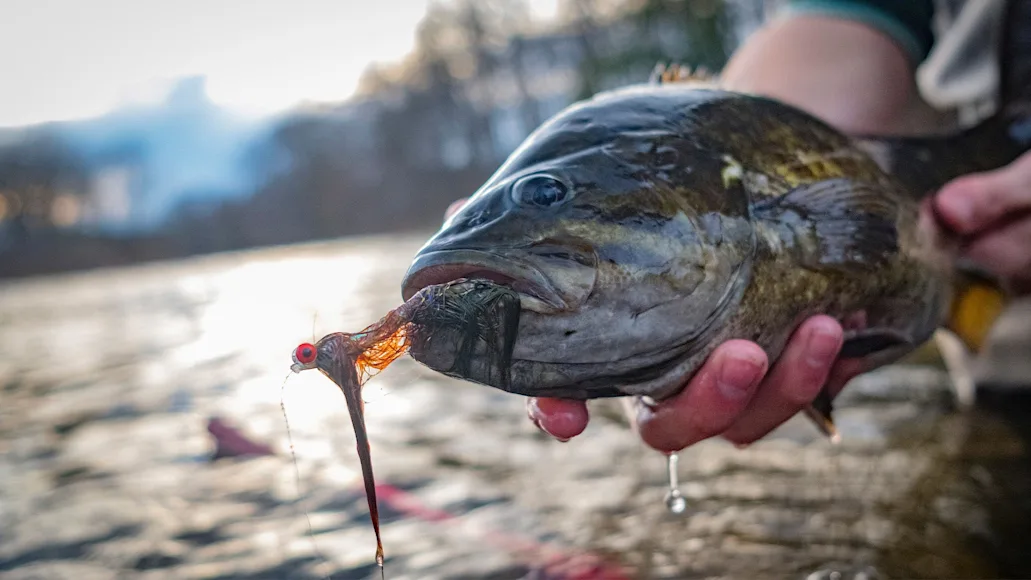Some people live for the blow of a big largemouth creaming a swimbait. Others can’t get enough smallmouths erupting on Spooks walking across the surface. And, sure, I love those things too, but come summer, my biggest bass thrills happen when I’m fly fishing for bass. Feeling the jolt after strip striking into a bass—whether it’s a bucketmouth sucking down a hairy bug in a farm pond or a bronzeback shooting out of a riffle to smoke a Deceiver—is positively addicting. Over the years, I’ve experimented with tons of the best bass flies, but these 20 have found a permanent home in my arsenal. Some come out to play more often than others, but they have each proved their worth in bassy situations. If you’re as amped for bass on the fly as I am, consider spicing up your meal offerings with these top fly patterns for bass fishing.
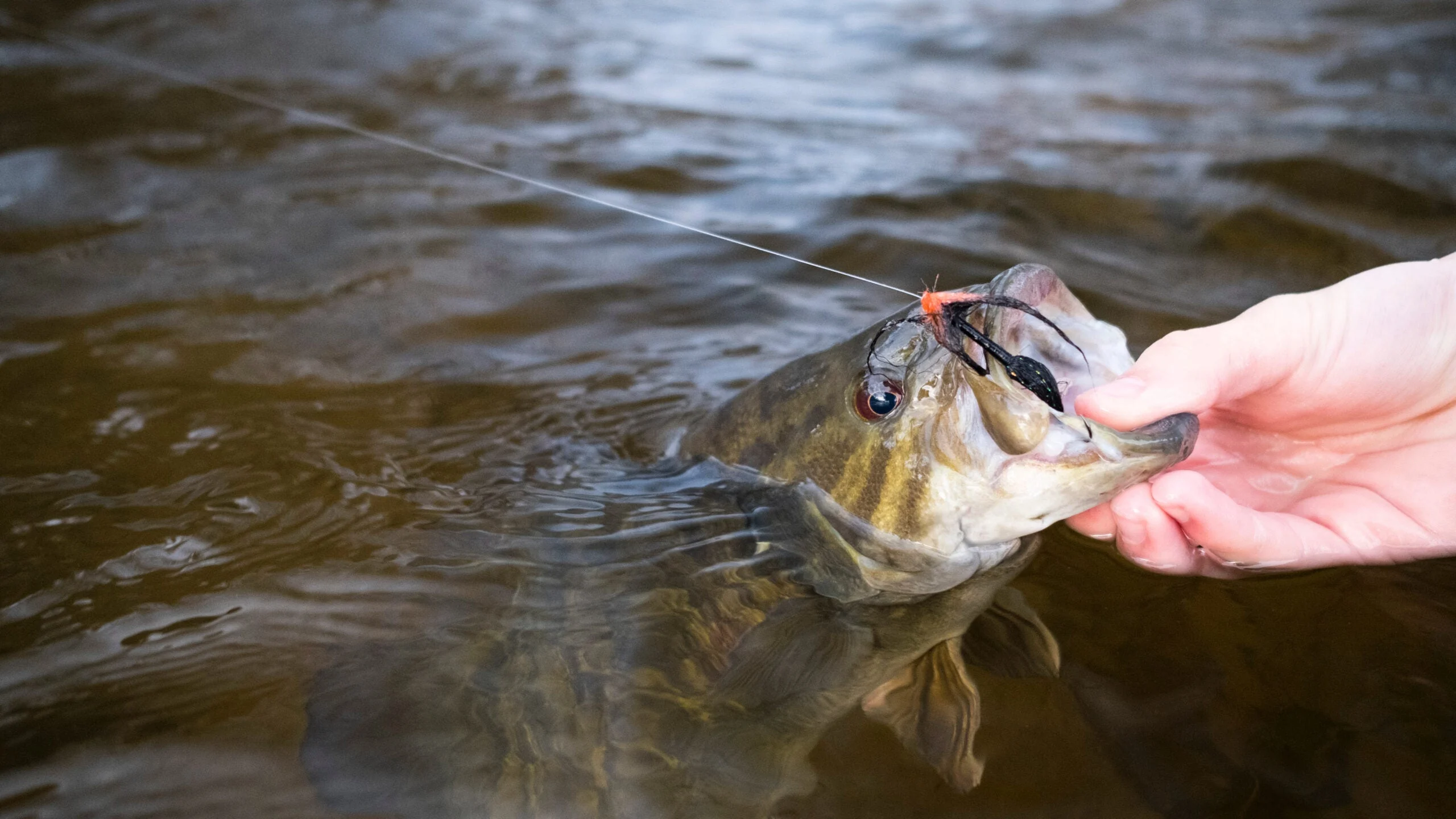
| A river smallmouth caught on a egg sucking leech. Max Inchausti |
Best Bass Flies: Surface Poppers and Bugs
1) Popper
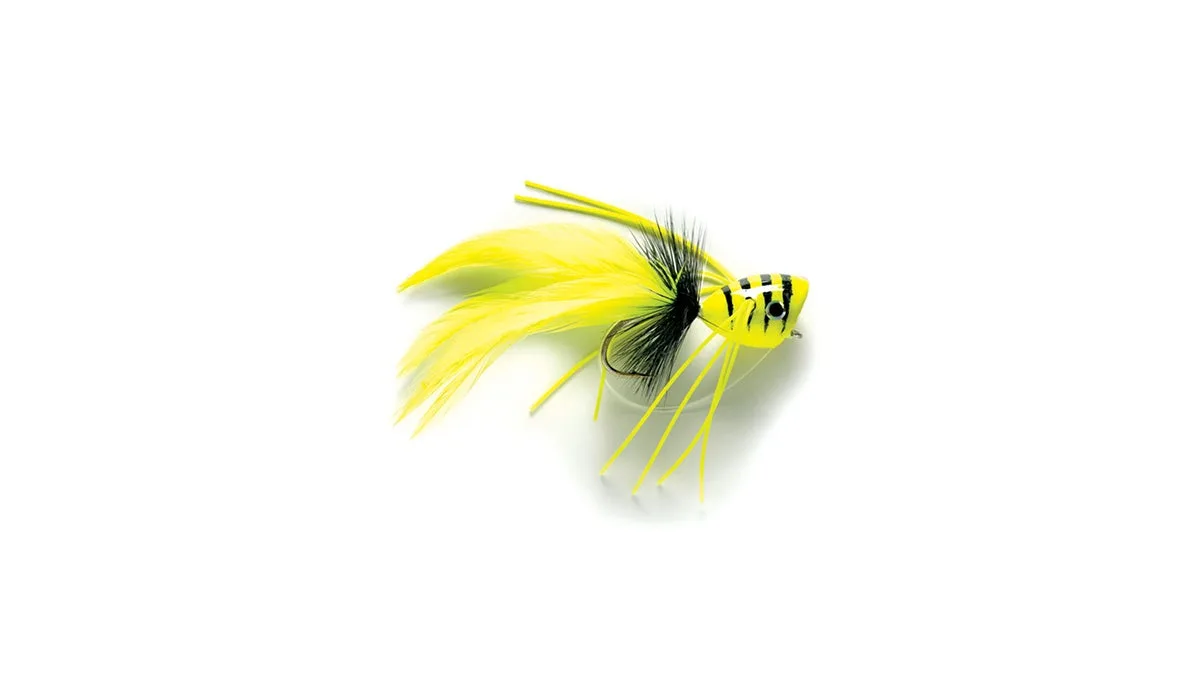
You can hit the pond or river with a wide variety of bass patterns, but let’s be honest: a classic foam popper will always be one of the most effective and fun to fish. There are many variations of the simple foam popper on the market, but I’ve always favored those with a deeply scooped mouth. In still water on a muggy summer evening, a slight twitch of the line produces a subtle “bloop” that largemouths can’t resist. Likewise, rip a foam popper through a short river eddy to get it throwing serious spray and any big bronzebacks lying in wait will be hard pressed not to take a swing.
2) Hair Bass Bug
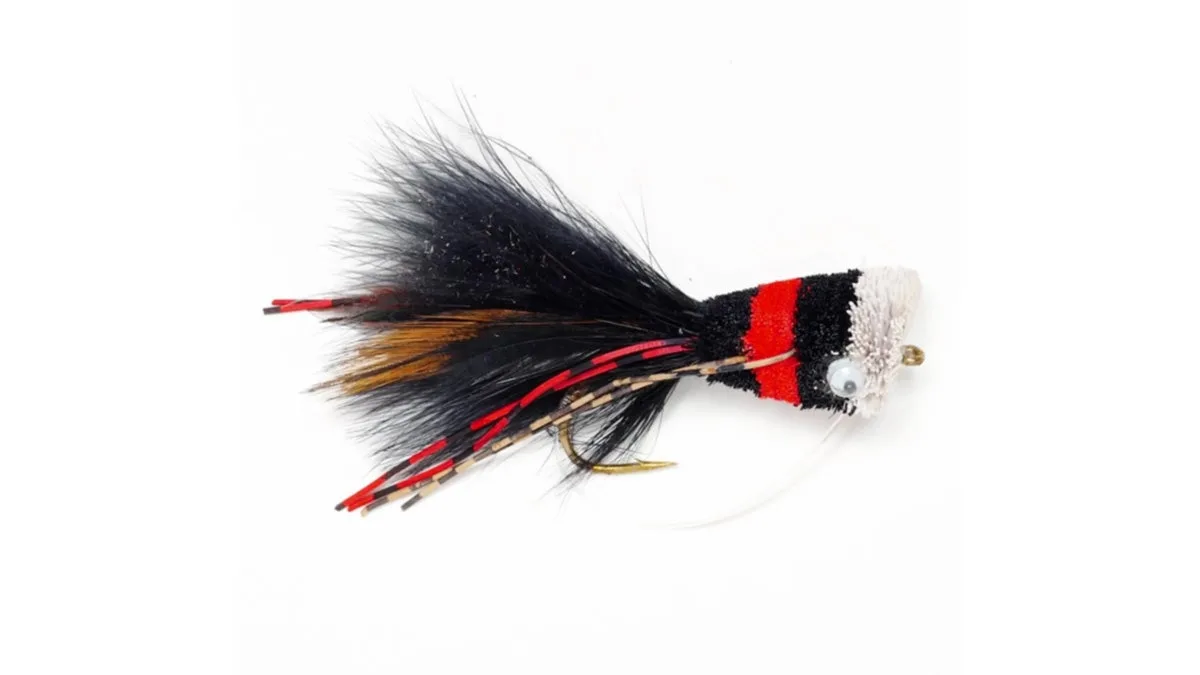
Think spun deer-hair poppers are just for your grandpa? Think again. Yes, they may be expensive (and they’re a real chore to tie), but hair has advantages over foam in certain situations. For starters, it lands fairly softly, helping you target shallow bass without spooking them. Hair bugs also make a subtler surface disturbance than foam poppers. Whereas foam produces a lot of noise, hair produces more wake. Many fly anglers argue that a live frog or mouse that ends up in the water is going to try to reach land without drawing a ton of attention to itself, and big bass know it. If you subscribe to that theory, a hair bug gently gurgling and waking across the surface might do a better job of raising a true hog.
advertisement
3) The Sneaky Pete
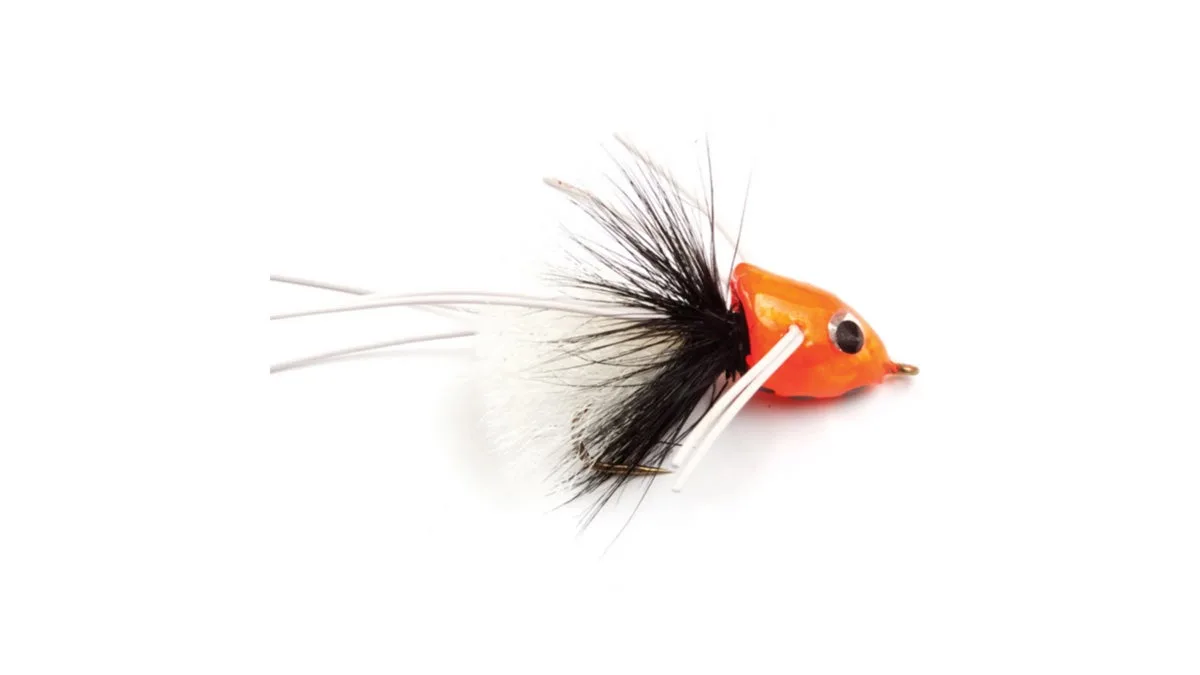
In essence, the Sneaky Pete is a regular foam head popper with the head spun around backwards. Just this one minor tweak to the tie has major advantages. The pointed head allows this fly to “walk” similarly to a Spook with short strips of the line, and it also creates a much more muted surface disturbance than a regular popper. A harder strip will even get this fly to dive an inch or two. This subtle presentation comes in handy in low, clear summer water when fly fishing for smallmouth bass. Under these conditions, I like to take my time with a retrieve, giving a Pete plenty of rest time between pulls. Wary smallies often track this fly for a distance before committing, and it’s often during a pause that they go in for the kill.
4) Schmidterbug
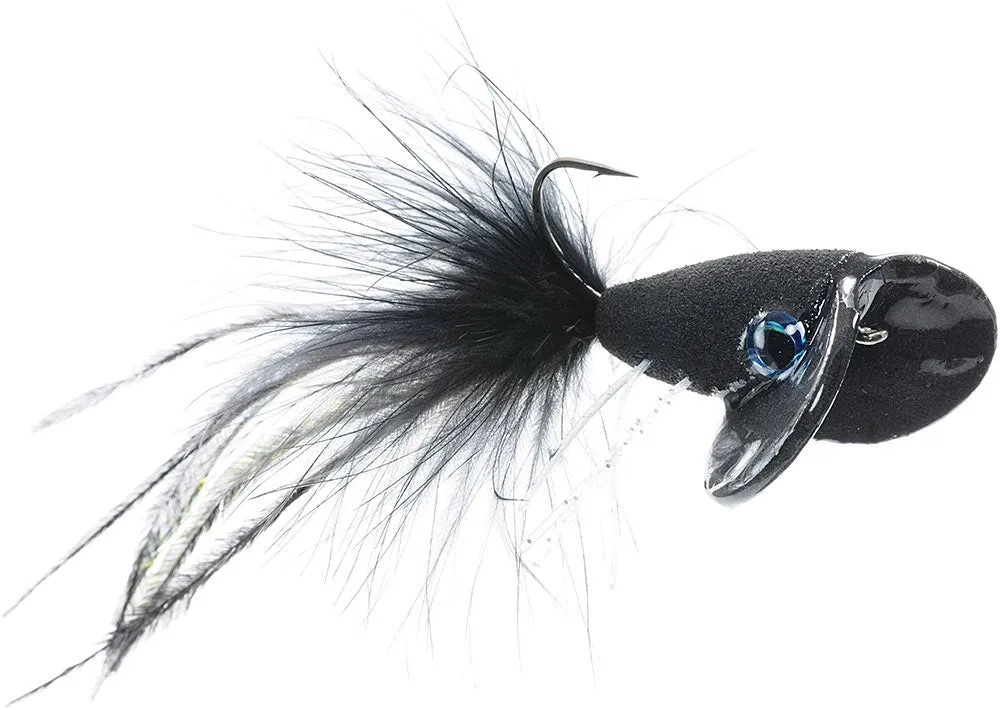
| The Schmidterbug is one of the best bass flies ever. Umpqua |
In my opinion, Brian Schmidt’s Schmidterbug is one of the most innovative bass flies to hit the scene in many years. Anyone fluent in old-school bass lures will recognize the design immediately. Schmidt used resin-coated foam to recreate the lip of a classic Jitterbug topwater, and this pattern matches the proven lure’s waddle and gurgle to a T. It’s not the most aerodynamic fly, requiring a bit more oomph to cast, but it’s worth the effort. Whether you strip steadily or impart short pulls, the Schmidterbug will dance across slop and stay clean thanks to its upturned hook, and leave as sexy a bubble trail as the original Jitterbug.
5) Bubblicious
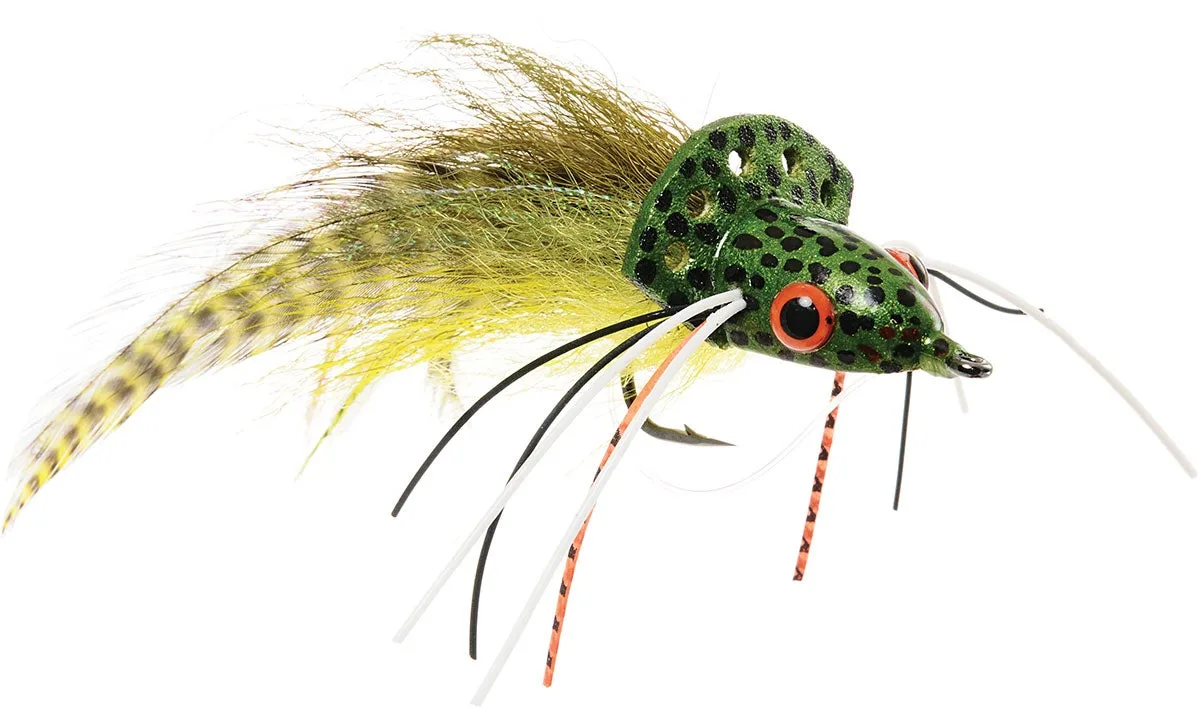
| The Bubblicious has holes punched in its collar to produce bubbles. Umpqua |
The Bubblicious is a modern twist on the classic Diver. While the collared head of a Diver is usually shaped and carved out of tightly-packed spun deerhair, the Bubblicious leans on foam to create the signature head that will dive on the strip and float back up to the surface. The tweak that really makes this fly shine over the old-school fly, however, is a series of holes punched through the foam collar. As the name suggests, these holes move air through them as the fly dives to create bubbles. In still water, the Bubblicious will leave a long trail fish can follow. In moving water, the additional bubbles serve to broaden the fly’s visual appeal from a distance, calling bronzebacks in from a long way off.
advertisement
6) Master Splinter
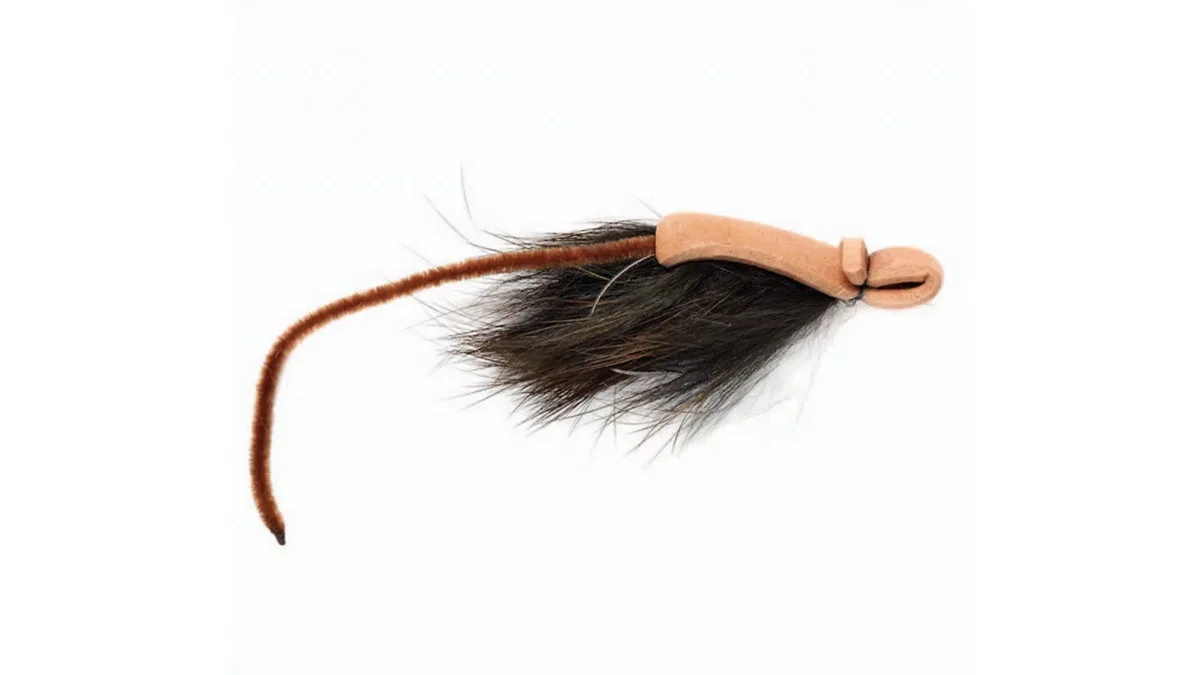
Full disclosure: I designed this fly, but hear me out before you call this entry a shameless plug. While the Master Splinter was created as a mouse imitator to take brown trout in the dark, I (and a lot of other anglers, I promise) have found it equally useful as a day or nighttime bass bug. Compared to more traditional spun hair mice, the Splinter has a slim profile that allows it to ride very low in the water. That means fish have less bulk to get their mouths around, which equals more positive hook ups after the take. The design also makes the fly easier to cast than a larger hair mouse, letting you lean on a 5- or 6-weight rod for delivery. I’ve positively punished bronzebacks in the dark on the Splinter, and if you gently strip one across a pond surface in the evening, get ready for the boom.
7) Dancing Frog
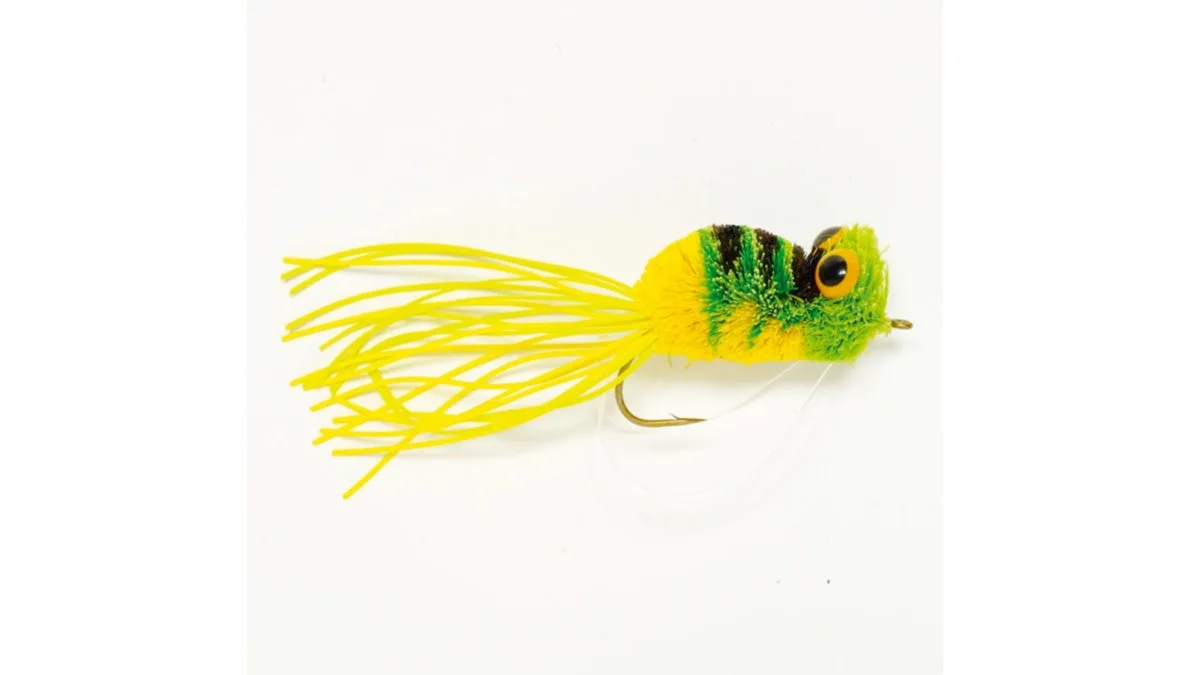
With a tail made completely out of rubber skirt material and a body made of spun deer hair, the Dancing Frog combines a touch of the old styling with more modern material. And it crushes largemouths. Not only does this bug displace a ton of water with a less-than-forceful strip, the rubber tail waves and wags slightly even at rest. That’s why I think this particular frog is so potent; it’s moving even when it’s not. Some of the best hits I’ve had on this fly have come during a long dead stop after waking the pattern only a few feet. You almost can’t fish the Dancing Frog slowly enough, especially when working it near pads or structure where you know a big fish that needs extra enticing lives.
8) Dragonfly
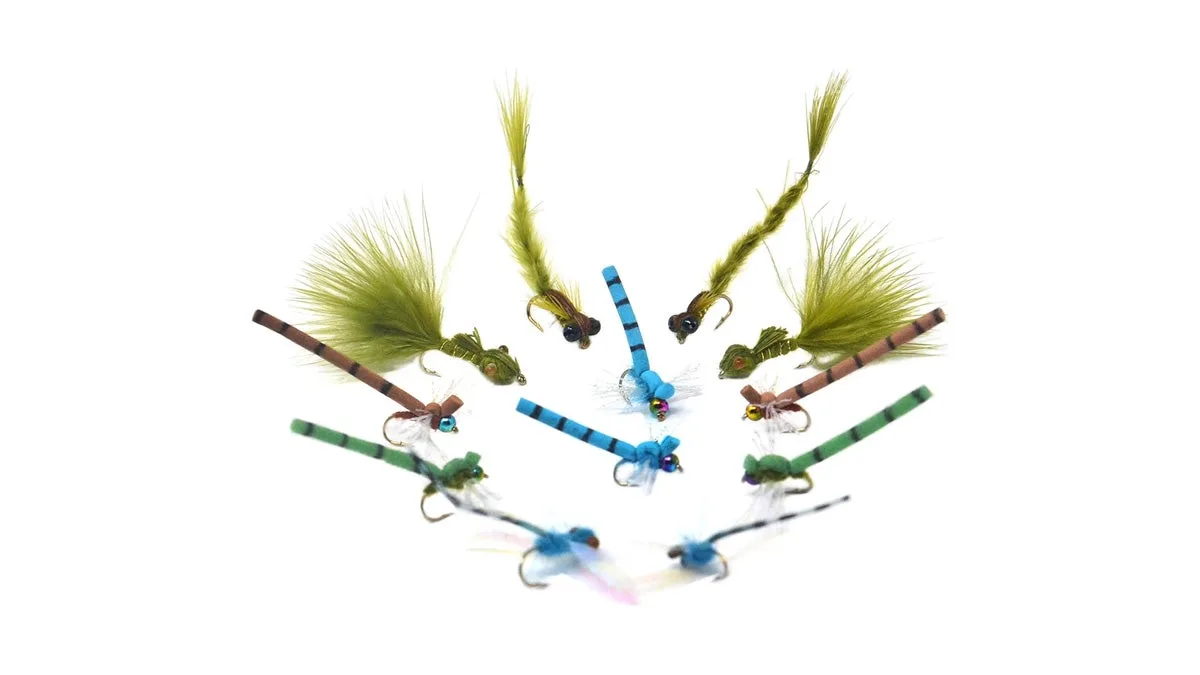
There are loads of different dragonfly and damselfly patterns available, and which you choose doesn’t really matter when bass are sipping on terrestrial flies like these. However, patterns that have a foam body have proven more advantages for me over the years than those made solely out of hair or synthetic materials. Foam produces a nice “slap” when it touches down, and I’ve found that this sound is often the trigger that gets bass racing over. The hard hit is especially useful in moving water where smallies know they have to crunch a dragonfly before the current carries it away. In still water, I like to let a foam dragonfly sit perfectly still after the slap, and then impart very gentle twitches to imitate a wounded dragon floundering in place.
advertisement
Best Bass Flies: Streamers
advertisement
9) Deceiver

Lefty Kreh’s Deceiver may have originally been developed for saltwater, but over time it’s proven to be one of the most effective baitfish patterns across all fisheries. Bass is no exception. The beauty of the Deceiver is that it’s light, allowing you to work it just subsurface over weeds or along pad edges. Likewise, drown a Deceiver on a heavy sink tip and it’ll dredge monster smallmouths out of the deepest river holes. While there are certainly more modern baitfish patterns developed specifically for bass, sometimes it’s hard to beat this tried-and-true original. White and chartreuse has always been one of my favorite color combos, but I’ve been known to tie Deceivers to match everything from bluegills to stocked trout.
10) Pike Bunny
Don’t mind the name.
While these long rabbit strip and marabou killers might have been designed for toothy fish, they are equally deadly on giant largemouths. Between the “breathing” of the feathers and sexy wiggling of the tail, a pike bunny is essentially mimicking lures like the Slug-Go, Senko worm, and even a skirted jig as it moves through the water. Sometimes an aggressive strip is what prompts a hard blow, but I’ve also had a lot of success casting a pike bunny along docks and laydowns, giving it a strip or two and just letting it fall. Keep your eye on the falling, fluttering fly, and be ready to strip strike when it suddenly disappears.
11) Clouser Minnow
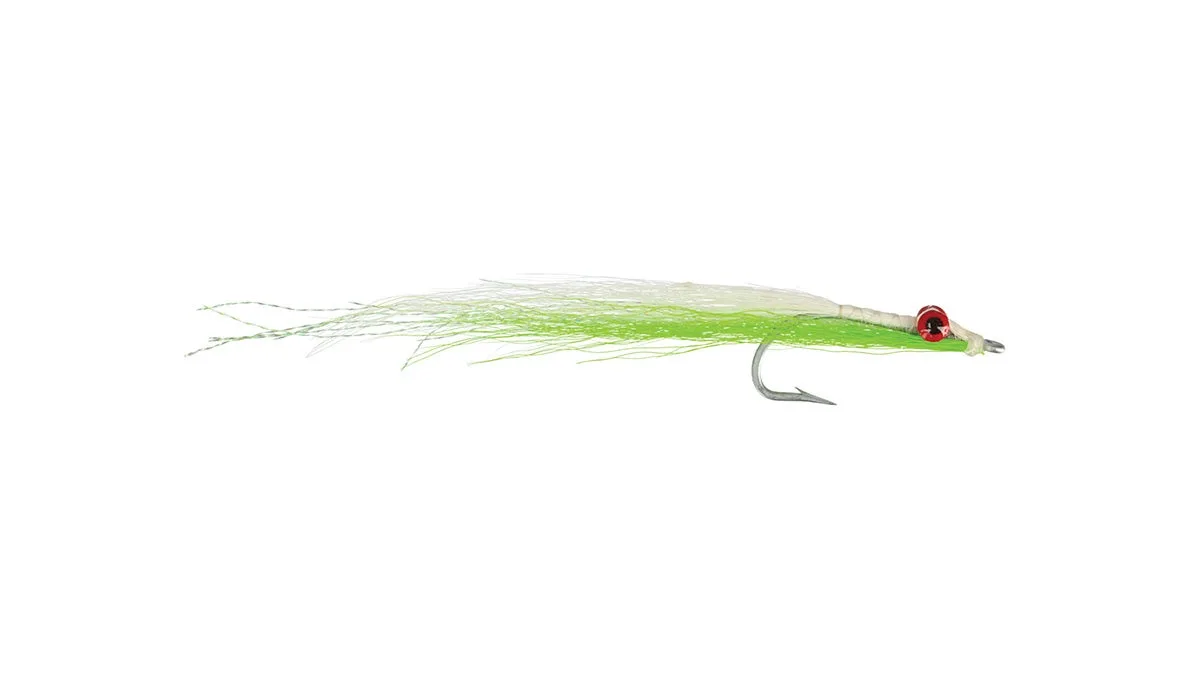
While the Clouser Minnow will catch just about any gamefish that swims, many people aren’t aware that it was originally developed as a smallmouth pattern. Bob Clouser designed this fly to put a hurt on Susquehanna River bronze, and it has been kicking butt and taking names across the globe for decades since its inception. Truth be told, while I’ve hammered loads of bass on countless other streamer patterns, if I could only ever fish one for smallmouths, it’d be the Clouser. Day in and day out, it simply catches more fish more consistently than any other subsurface tie. That’s partially because its jigging action is hard for bass to resist, but also because by changing colors and sizes, a Clouser can be used to imitate anything from a shad to a crawfish to a hellgrammite and can be fished at any depth.
advertisement
12) Hud’s Bushwhacker
Use Hud’s Bushwacker in thick weeds.
The Bushwacker is a new-school pattern that’s only been available for a few years, but when it comes to bass fishing, I’m already willing to call it a new classic. Tied on an inverted wide-gap worm hook with the material covering the point, the Bushwacker is about as weedless a baitfish pattern as you’ll find. I’ve stripped this bug through pads, grass, weeds, and even over wood; you’ll be shocked by how clean and snag-free it stays. And you don’t need me to explain the benefits of that cleanliness when it comes to hunting big bass in the nasty stuff. It also has a nice rate of fall, turning on its side when paused and fluttering down like a dying shad or bluegill.
13) Meat Whistle
Meat Whistle is a simple streamer that works.
At first glance, the Meat Whistle is a pretty simple streamer, relying on proven trigger materials like rabbit strip, marabou, and wiggly rubber legs. The real sex appeal, however, lies in the upturned eye of the jig hook this pattern is tied on. This simple tweak to what would be an otherwise utilitarian streamer gives the Meat Whistle a rise-and-fall action similar to bass favorites like swim jigs and hair jigs. White and chartreuse Whistles make killer shad patterns. Retrieve them with quick strips, letting them fall in between pulls, and smallies will climb all over this jigging bug. Opt for a rusty brown pattern and let it get down, and largemouths will mistake it for a fleeing crawfish almost every time it gets in front of their faces.
14) Mini Drunk & Disorderly
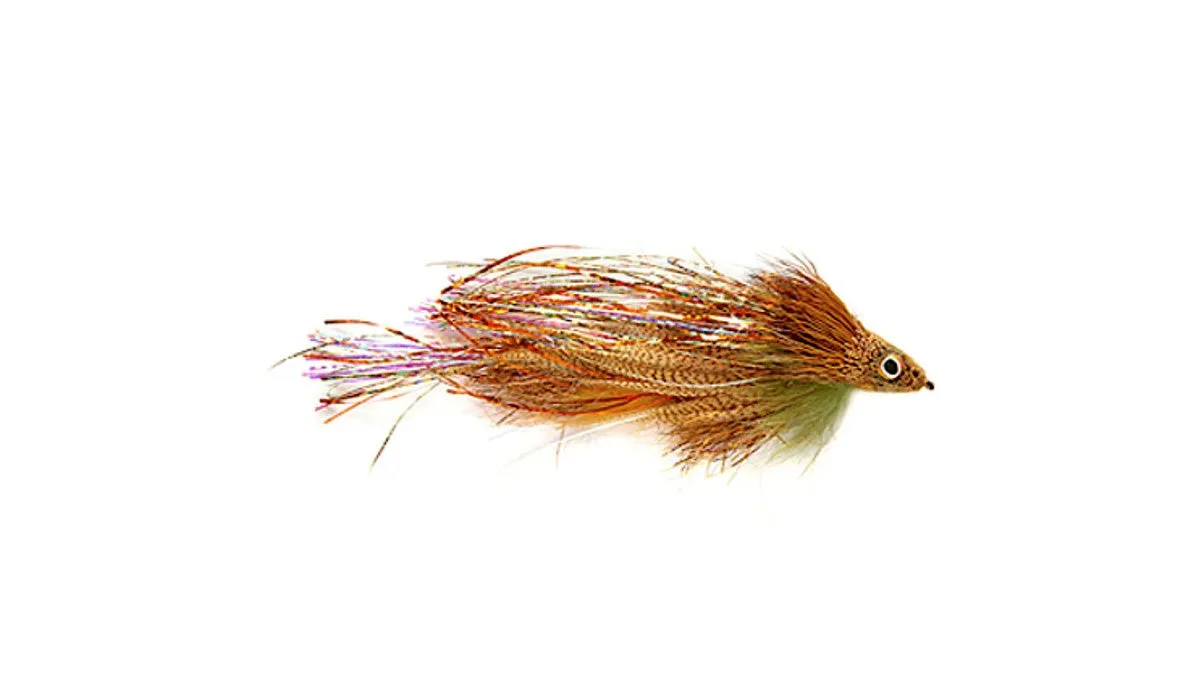
The brainchild of mad fly scientist Tommy Lynch, the Mini “D&D” was actually designed to fool monster brown trout. The unique sloping head carved from tightly packed deer hair and then coated in resin acts almost like the lip on a jerkbait, causing this fly to dive, wobble, and change direction when you strip. While it’s certainly lethal on trout, I’ve put a serious hurt on bass of both the green and brown variety with this fly, too. Because the D&D is so buoyant, you can keep it working over tall grass and weeds in still water when you cast it on a floating line. In the river, I’ll match the bug with a sink tip to get it working deeper. In either case, the erratic behavior of this fly seems to tick bass off as badly as a jerkbait, and on several occasions, the D&D scored an eat when every other pattern I threw blanked.
Best Bass Flies: Baitfish Patterns
advertisement
15) Game Changer
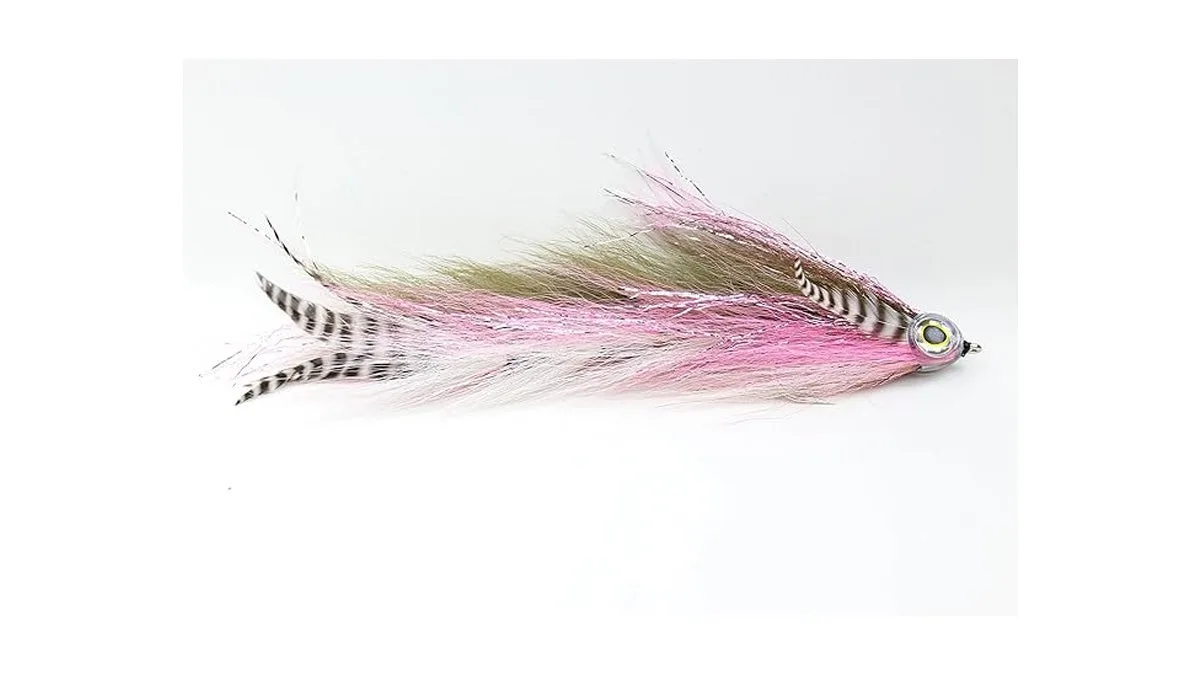
This fly positively lives up to its name. With three jointed segments and a tapered synthetic body, the Game Changer moves through the water in a seductive S pattern akin to a fancy carved swimbait. Whether you wake it just under the surface or let it fall deeper into the column, it’s a potent pattern that draws strikes from heavy-hitter bass. If there’s one downside to this fly it’s that it doesn’t fare well in heavy cover. Where it really shines is in open water areas where bass are chasing shad or stocked trout. I consider the Game Changer a swimbait for the fly rod, so use it wherever you’d feel comfortable chucking a high-dollar hardbait, and just know that when a bass commits to this fly, it’s not usually a dink.
16) Deerhair Sunfish
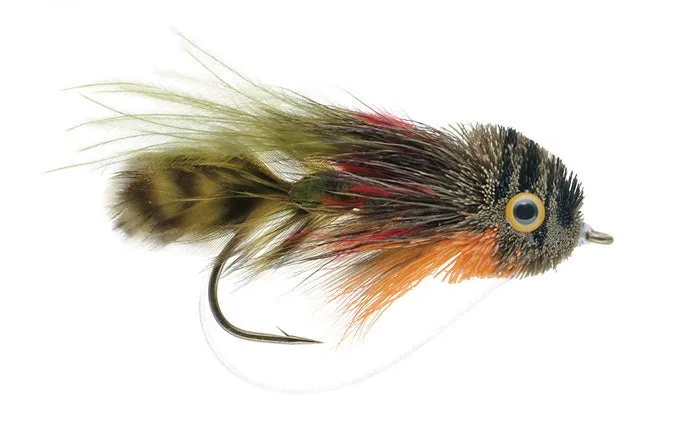
Catch bass protecting their beds with the Deerhair Sunfish.
This bulky, stubby little bug is an absolute destroyer when either bass or bluegills are on beds. You’ll probably want at least an intermediate sink-tip to help get this hair bug under the surface, but once it’s submerged, its buoyancy will allow it to hover in mid water or just off the bottom. When big bass are defending against bluegills or dining on them in the shallows, this bug is tough to beat. Work it with quick strips on the perimeter of bluegill beds to entice any bass hanging just out of eyeshot. Over bass beds, let it hover above the sweet spot until big momma has had enough and takes a whack.
17) Gummy Minnow
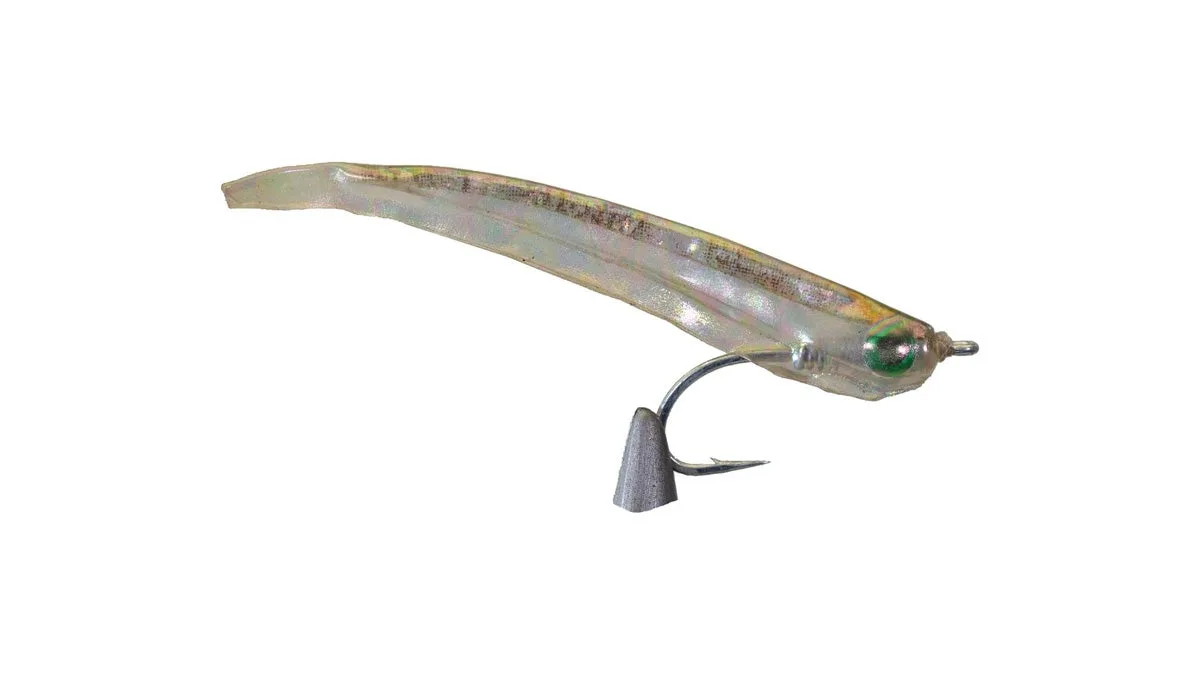
With a fully synthetic body made of rubbery skin and a shimmering flash foil core, the Gummy Minnow was designed for saltwater fly fishing, namely to fool false albacore into mistaking it for an anchovy. Guess what? It’s also a dead ringer for a juvenile shad, and when bass get on baitfish schools, the Gummy is downright deadly. While it doesn’t have a lot of wiggling action, it’s the flash that I believe really draws a fish’s attention. It’s essentially like tossing a metal spoon into the fray, and because of the Gummy’s flash, it’s also a good choice when the water is slightly stained. It may not be the pattern you’ll pick over a Deceiver or Clouser on a routine basis, but on the days when shad fry are skipping out of the water as they swim for their lives, tie on a Gummy.
advertisement
Best Flies for Bass: Oddball Bugs
advertisement
18) Worm Slider
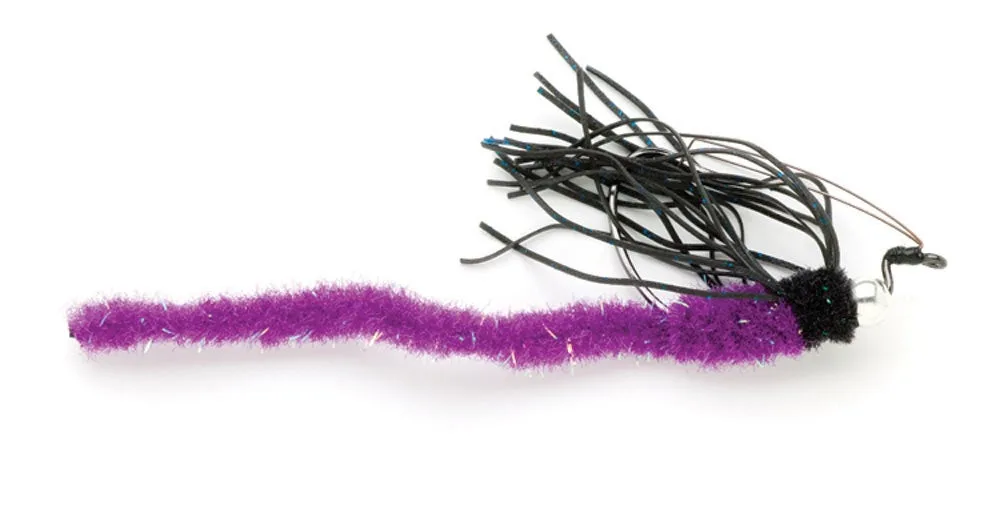
Worm Slider Umpqua
There’s no getting around the fact that the Worm Slider is a direct knockoff of a traditional plastic worm, right down the wide-gap worm hook. At the end of the day, however, it’s a killer pattern that comes through when bass just don’t seem to want to eat off the surface, or during those mid-day summer lulls when they get sluggish. Presentation is pretty simple: cast next to a dock, laydown, or along a weed edge and let the Slider touch down. Gentle strips and line twitches will get the soft tail and rubber legs at the head working. In essence, you can consider this pattern a shakey head for the fly rod, as it allows you to stay in the zone a long time and chip away at a non-committal bass until it slurps it down. Of course you can also swim this pattern just subsurface and it’ll get trashed, too. As the Worm Slider is weedless, go ahead and fire it into the junk.
19) Gully Ultra Craw
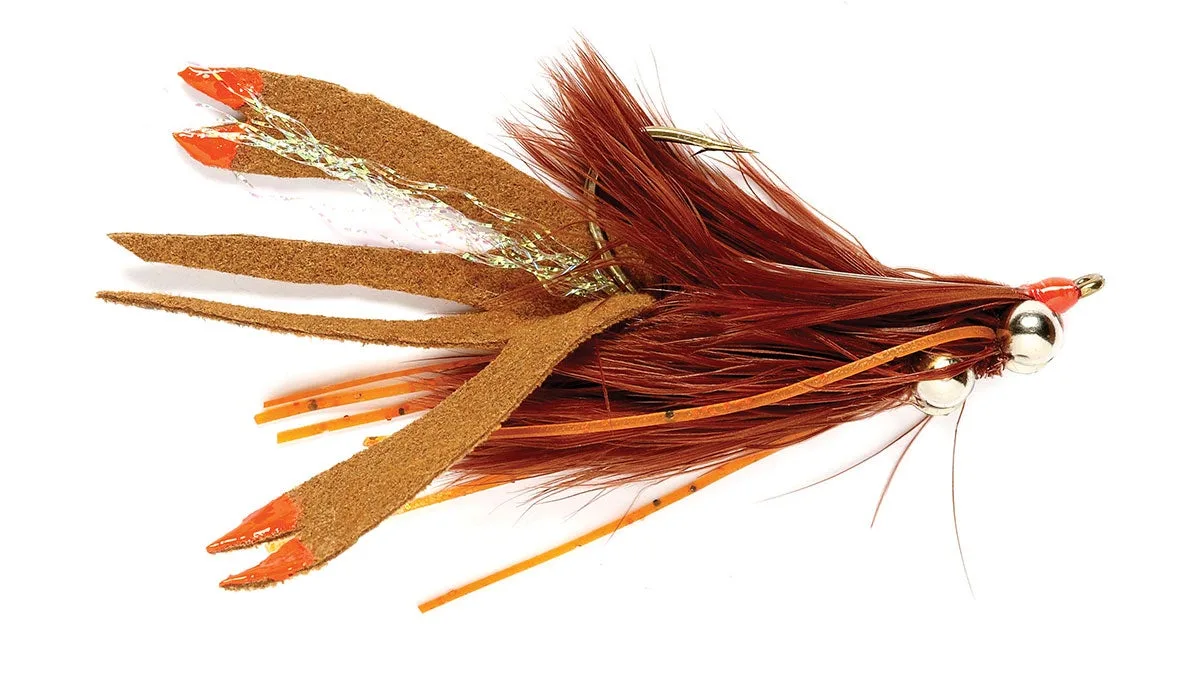
Gully Ultra Craw Orvis
Catching bass on the surface is a treat, but sometimes you just have to go deep, and this crawfish pattern drops like a stone. Once it touches down, the double dumbbell eyes make it stand in fighting position, challenging any smallie or bucketmouth that moves in for a look. It’s especially deadly on bedding fish, but I’ve caught a lot of bass on this bug slowly crawling it across rocky river flats and over silted lake shallows. Much like fishing a jig or worm, don’t wait until you feel the hit, but rather keep a sharp eye on your line for any stops, stutters, or slight changes in direction. If you notice any of the aforementioned, strip strike like you mean it.
20) Schmidterbait
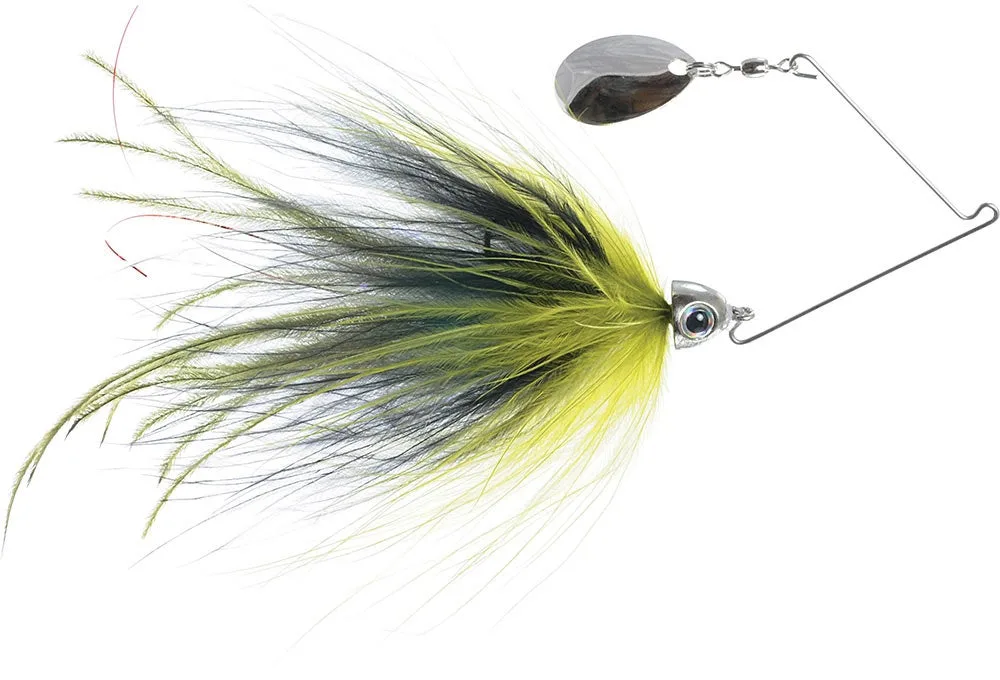
Schmidterbait Umpqua
OK, let’s not pull punches with this pattern. Is it a fly? Is it a lure? I’ll let you make that call. The bottom line is that Brian Schmidt’s Schmidterbait will destroy bass for anyone willing to tie one onto their tippet. I happen to be one of those people, usually when water clarity is low, or the local rivers are running high. I’m not suggesting it’s the first fly I’ll throw, however, I always have a few on standby for when the going gets tough. Short, poppy strips get that little blade spinning fast. When you stop, it will gently twist away as the fly falls. If that sounds like a spinnerbait, well, yeah that’s because it essentially is a spinnerbait, albeit one light enough to effectively cast on the long rod. Scoff if you want, but if using a Schmidterbait meant the difference between a tight line and skunking, what would you do?

